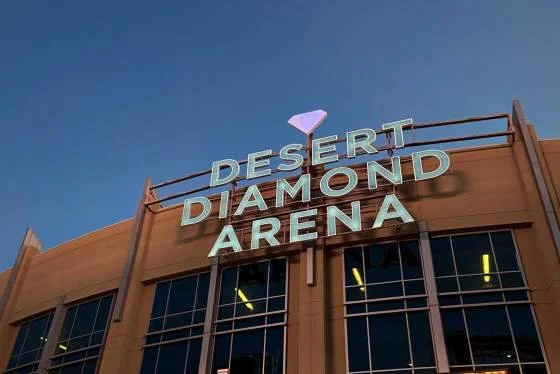Building a Better Supply Chain
Sustainable Procurement for the Events Industry
In the events and venues world, every purchasing decision — from bulk beverage orders to furniture rentals — has a ripple effect. Choosing more sustainable products and vendors reduces environmental impacts and can help meet critical industry standards and stakeholder expectations.
Here's what the sustainability experts at Honeycomb Strategies recommend for getting started in building smarter, more sustainable procurement processes — and why making even a few key changes can make a big difference.
Set a Strong Foundation with a Sustainable Procurement Policy
One of the most important first steps is to create a written sustainable procurement policy. Julia Spangler, Sustainability Manager on Honeycomb Strategies' Events & Experiences team, emphasizes why:
“The idea of ‘sustainable procurement’ can seem like a black box — what does it really mean, and how do you achieve it? The truth is it can mean different things to different people. The importance of developing your organization's procurement policy is to make it crystal clear to your staff, who may not be sustainability experts, how to align their company purchases with your social and environmental goals.”
Without a policy, teams can easily get overwhelmed by misleading marketing claims (greenwashing) or can be unsure of what criteria really matter. A sustainable procurement policy helps cut through that confusion, providing clear priorities — whether that's end-of-life disposal, supplier diversity, or carbon footprint reduction — and guiding buyers toward products and services that truly align with event goals.
CASE STUDY
The American Water Works Association (AWWA) is recently debuted a sustainable procurement policy for their Annual Conference and Exposition. Their policy focuses on a few core sustainable criteria, leaving room to become even more ambitious over time — a smart approach for organizations new to formalized sustainable purchasing.
Prioritize Local and Sustainable Purchasing
For venues and sports facilities (or events that always occur in the same place), buying local can be one of the most effective ways to improve sustainable procurement outcomes. Jade Strauss, Sustainability Coordinator on the Sports & Venues team, advises:
“One of the most common causes of excess waste and carbon emissions comes from packaging and shipping emissions; by investing in a sustainable procurement process, venues and events can significantly improve their environmental impacts.”
Choosing consumables, durable goods, and food and beverage from local vendors not only cuts emissions but also supports local economies. Buying locally usually requires less packaging as well, reducing waste. However, Strauss points out that one of the biggest challenges venues face is tracking sustainable purchasing accurately. Goods may be bought with good intentions, but without organized tracking systems, it's difficult to evaluate progress or meet standards like LEED. It’s important to track sustainable purchasing with KPI using a reliable measurement system, like Honeycomb Strategies’ dashboard HIVE.
CASE STUDY
At first, Desert Diamond Arena faced the issue of incomplete purchasing data when applying for LEED certification. By introducing a customized sustainable purchasing template and providing sustainable product alternatives, Desert Diamond Arena was able to adjust their purchasing habits. With the help of reliable data tracking, the arena reached the LEED threshold for sustainable procurement.
Collaborate Closely with Suppliers
Margaret McIntosh, Sustainability Associate on the Sports & Venues team, underscores the importance of collaboration and supply chain transparency to meet sustainable procurement goals.
“Creating a sustainable procurement policy can be one of the simplest ways to make a big change in your venue or event.”
Rather than accepting broad green claims, she advises working with suppliers who share your organization’s commitment to transparency. It's important to verify the sustainable attributes of products wherever possible, especially when working with large suppliers like Sysco or Staples, where sustainable options may exist but are sometimes hard to locate in a vast catalogue.
Budget can also be a challenge, McIntosh notes. Switching to sustainable products doesn’t have to happen all at once — organizations can make incremental changes, focusing on a few high-impact swaps at a time to keep costs manageable while moving toward their goals.
Getting Started: Resources for Procurement Success
Templates: Honeycomb Strategies offers a Sustainable Purchasing Policy template for clients, providing a structured, customizable starting point.
Certifications: Events industry leaders can look to criteria like the EIC Sustainable Event Standards to set benchmarks and align purchasing practices. Check out free guidance on Venue Certification options and Event EIC Certification.
Tracking Tools: Implementing simple spreadsheets or tracking software like HIVE can help teams capture purchasing data accurately and measure improvement over time.
Ultimately, sustainable procurement strengthens your production line, reducing risk exposure. Opting for consistent sustainable procurement will develop a clear, actionable path toward events and venues that are lighter on the planet and stronger for communities.
Want help creating or refining your sustainable procurement policy?
Contact Honeycomb Strategies to learn how we can support your event, experience, or venue in sustainable solutions.



